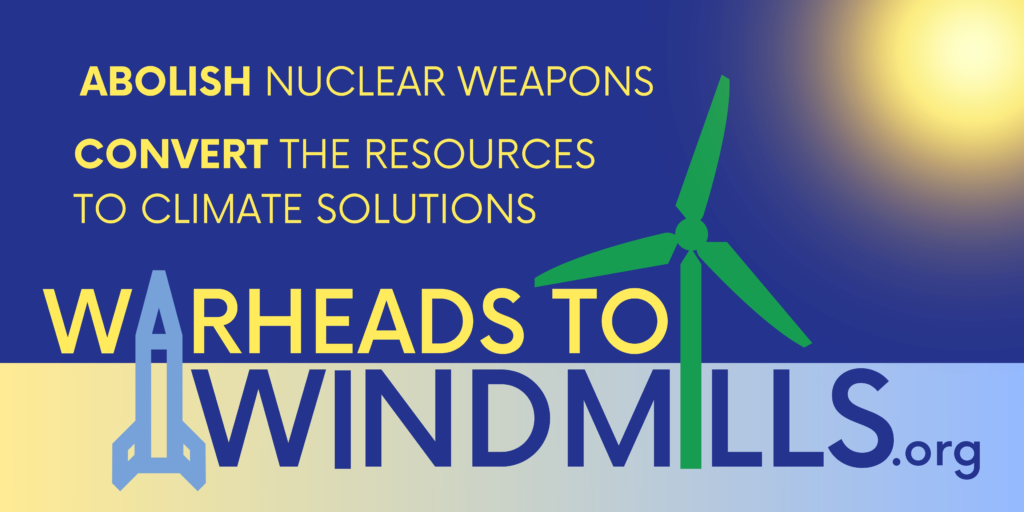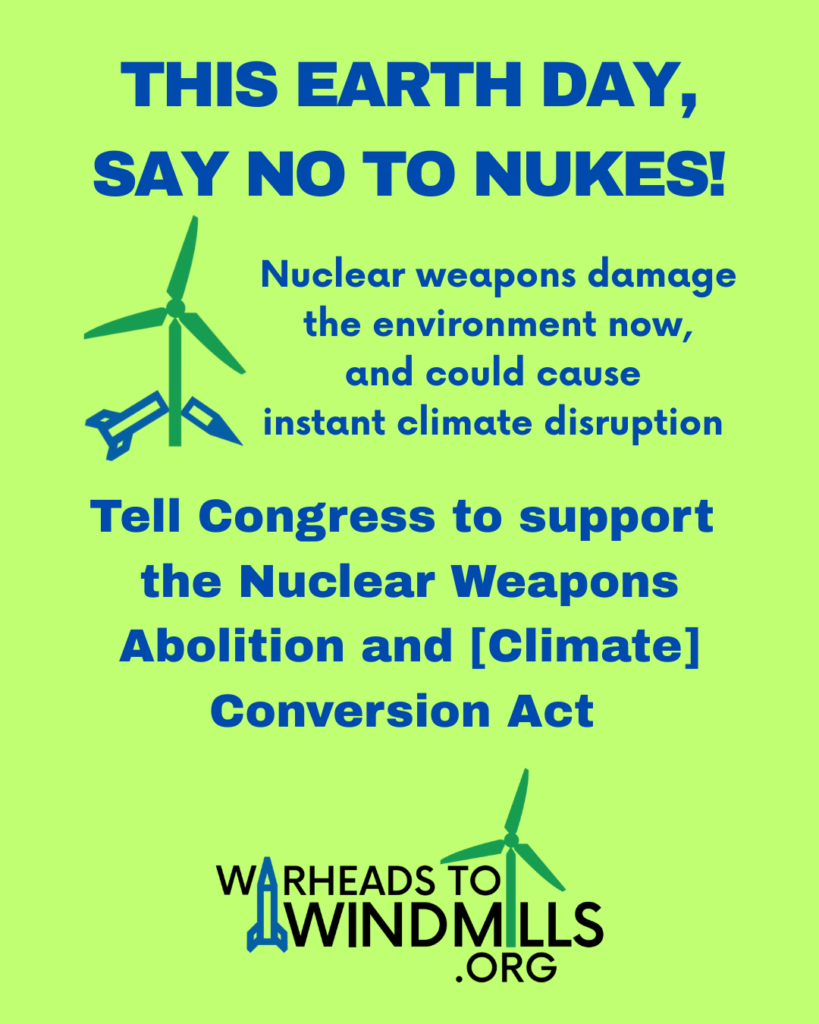This Earth Day, the earth stands the closest to a global disaster since the founding of the doomsday clock in 1947, according to the Bulletin of Atomic Scientists. When the first celebration of Earth day was held on April 22nd, 1970, the Doomsday Clock sat at 10 minutes. 55 years later and we sit at a perilous 89 seconds.
It is time to face both of the existential threats of nuclear weapons and climate change head on and together. Climate change increases the risk and magnitude of conflicts across the globe. As environmental conditions grow worse and tensions rise, any increase in conflict inherently increases the risk of nuclear war. At the same time, the production of nuclear weapons (extraction of materials, construction, and testing) and their associated military infrastructure contribute to climate change via excessive greenhouse gas emissions, deforestation, and other military activities that harm the environment.
As tensions rise, we produce more weapons and the cycle continues exponentially.
Along with these actively increasing existential threats, there are legacy environmental threats that are re-emerging. Rising sea levels, flooding, and other extreme environmental affects of climate change greatly increase the risk of contamination from nuclear production and waste sites.
Nuclear weapons are not just a peace issue, they are an environmental crisis. Every species and ecosystem on earth would be affected by a nuclear war. Only one species can stop it. This Earth day, stand up for the earth and say no to nukes.
Take Action Now
Nuclear Weapons Abolition and Climate Conversion Act of 2025
This bill calls on the US to encourage global nuclear weapons abolition, sign the Treaty on the Prohibition of Nuclear Weapons and to redirect resources that are being used for nuclear weapons programs to be used for addressing the climate crisis and human and infrastructure needs, such as housing, health care and restoring the environment.


